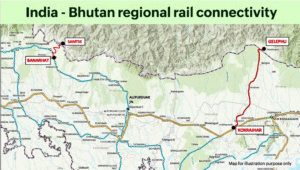
A Conservation Success on India’s West Coast
The Olive Ridley Return: A Conservation Success on India’s West Coast
A CLAT Current Affairs Insight into Wildlife Protection and Community Participation
Why in News?
In a significant environmental milestone, Maharashtra’s coastal beaches, especially Guhagar beach in Ratnagiri district, witnessed a heartening return of Olive Ridley sea turtles, marking a renewed nesting event after years of conservation efforts. The local beach management teams, forest officials, and volunteers have worked tirelessly to restore turtle habitats and create safe nesting zones, with the release of thousands of hatchlings into the sea over the last few months.
This development is significant not just for biodiversity but also for India’s wildlife legal framework, community participation in conservation, and climate-sensitive coastal management policies—key topics for CLAT 2026 aspirants.
Introduction
The Olive Ridley turtle (Lepidochelys olivacea) is the most abundant of all sea turtle species globally but has faced serious threats in recent decades due to:
- Habitat loss
- Coastal development
- Fishing nets
- Climate change
India is home to several sea turtle species, and while Odisha is most famous for large-scale nesting, the west coast revival—especially in Maharashtra, Goa, and Karnataka—is a critical step towards ensuring the species’ survival in previously declining habitats.
Point-Wise Summary of the Article
- Olive Ridleys Return to the Konkan Coast
- Guhagar beach in Maharashtra has seen a notable increase in nesting activity of Olive Ridley turtles.
- Volunteers and beach managers like Dilip (featured in the article) now help incubate eggs and release hatchlings safely into the sea.
- More than 3,000 hatchlings were released this year, signaling a conservation breakthrough.
- Nesting Geography in India
- Traditional nesting sites include:
- Odisha coast (Gahirmatha, Rushikulya)
- Andhra Pradesh
- Tamil Nadu
- The West Coast (Maharashtra, Goa, Karnataka) is seeing a revival due to focused conservation programs and volunteer support.
- Understanding Olive Ridley Turtles
- Size: 2 to 2.5 feet
- Weight: 35–50 kg
- Lifespan: Up to 50 years
- Diet: Crustaceans, shrimp, jellyfish, small fish
- Nesting: Females return to the same beach where they were born, often in mass nesting events called “arribadas”.
- Threats to Survival
- Fishing Nets: Accidental entanglement leads to drowning.
- Coastal Development: Construction near beaches destroys natural nesting grounds.
- Light Pollution: Confuses hatchlings, drawing them away from the sea.
- Poaching: Eggs and hatchlings often fall prey to illegal trade and local consumption.
- Government and Community Action
- Maharashtra Forest Department initiated hatcheries and night patrols.
- Local villagers trained to monitor, guard, and release hatchlings.
- Nonprofits like Sahyadri Nisarga Mitra collaborate to ensure data collection, tracking, and awareness generation.
- Nesting sites are fenced and tagged to monitor egg counts and hatching success.
- Key Legal Frameworks in Play
- Wildlife Protection Act, 1972: Olive Ridleys are protected under Schedule I, which gives them the highest protection.
- Environment Protection Act, 1986: Protects coastal and marine ecosystems.
- Coastal Regulation Zone (CRZ) Notification: Limits construction near ecologically sensitive coastal areas.
- Biological Diversity Act, 2002: Encourages biodiversity conservation and includes coastal marine life.
- Conservation Successes
- In Odisha (2021–2022): Over 3.49 lakh nests recorded.
- Maharashtra’s sea turtle protection program led to a return after decades, indicating ecosystem recovery.
- Local youth, once indifferent, are now trained in conservation and patrol work, creating a community-anchored protection model.
- Broader Significance for Climate and Legal Policy
- Olive Ridleys are keystone species: their presence reflects the health of the marine ecosystem.
- Protecting their habitats aligns with India’s climate action commitments, blue economy, and SDG-14 (Life Below Water).
- Restoration work contributes to disaster mitigation, such as protection from coastal erosion and flooding.
Notes on Key Terms for CLAT Aspirants
Term | Explanation |
Olive Ridley Turtle | A small, endangered sea turtle species known for mass nesting (arribadas). Protected under Wildlife Protection Act. |
Arribada | A phenomenon where thousands of female sea turtles come ashore simultaneously to lay eggs. |
CRZ (Coastal Regulation Zone) | Environmental policy that regulates human activity in sensitive coastal areas to prevent habitat destruction. |
Hatchery | A protected area where turtle eggs are artificially incubated and then hatchlings are released into the wild. |
Schedule I of WPA 1972 | Legal classification giving the highest level of protection to endangered species. |
Relevance for CLAT 2026 and Other Competitive Exams
For CLAT GK & Legal Reasoning:
- Application of environmental law and wildlife protection statutes
- Role of constitutional duties (Article 51A(g)) in environmental conservation
- Legal status of community participation in conservation
For Essay & Interview:
- How can community-led wildlife conservation succeed where government programs fail?
- Should coastal development be restricted to protect marine life?
- How can we ensure that conservation also leads to sustainable livelihoods?
Analytical Reflections
- Success Rooted in Local Participation
- Conservation efforts succeeded because locals were included in decision-making and given training and responsibility.
- Law in Action: Ground-Level Enforcement
- Wildlife laws must not just exist but be backed by ground-level teams who ensure implementation and monitoring.
- Interdisciplinary Linkage
- Conservation links biology, climate policy, economics (tourism, fishing), and legal protection—an ideal case study for integrated learning.
Conclusion
The Olive Ridley turtle’s return to Maharashtra’s beaches is more than just a wildlife success—it is a powerful lesson in collaborative conservation, legal enforcement, and ecological resilience. For CLAT 2026 aspirants, this event highlights the importance of environmental governance, community engagement, and legal awareness in protecting India’s biodiversity.
Understanding such real-world case studies not only prepares aspirants for CLAT General Knowledge and Legal Reasoning but also builds awareness about the role of law in sustainable development.




